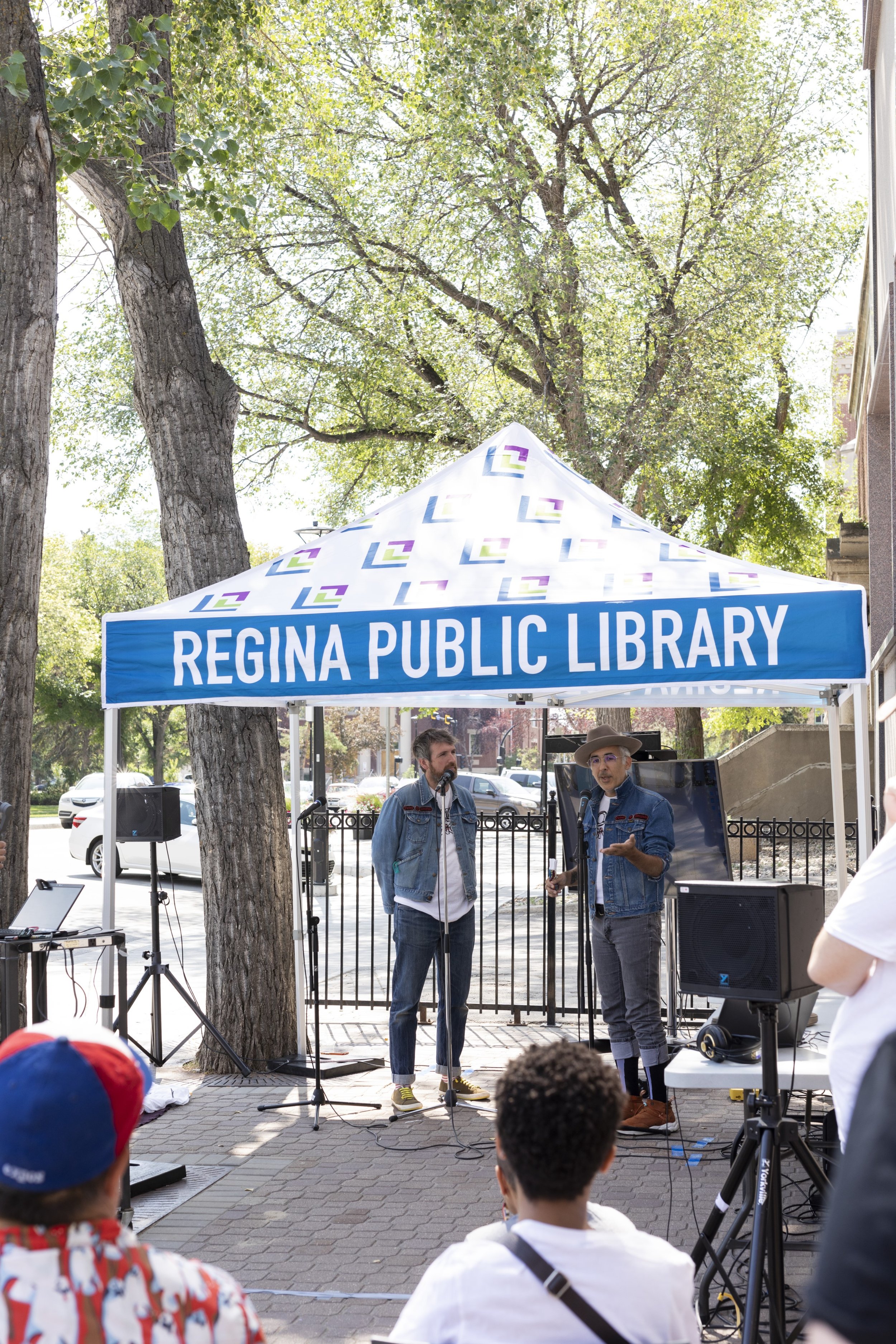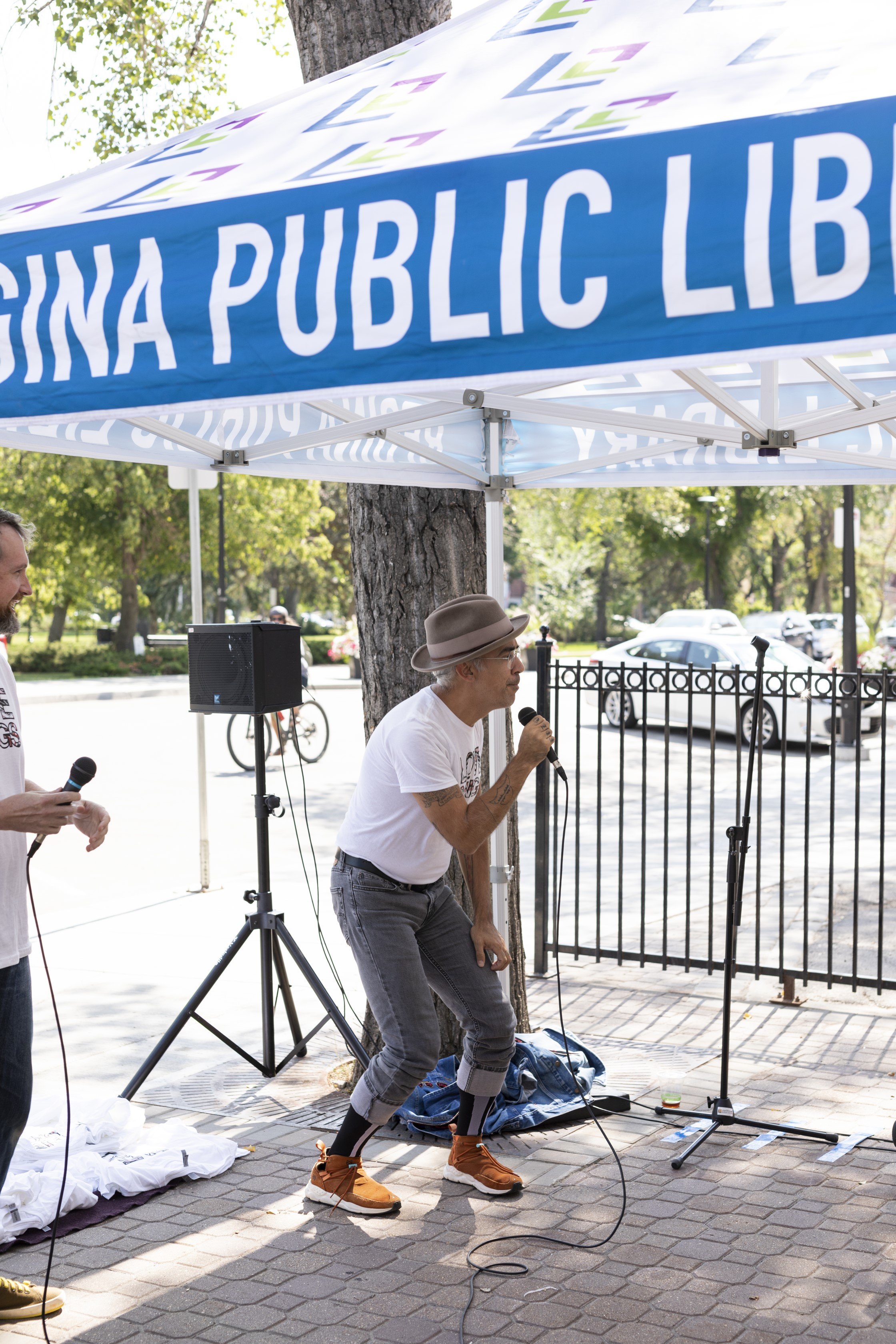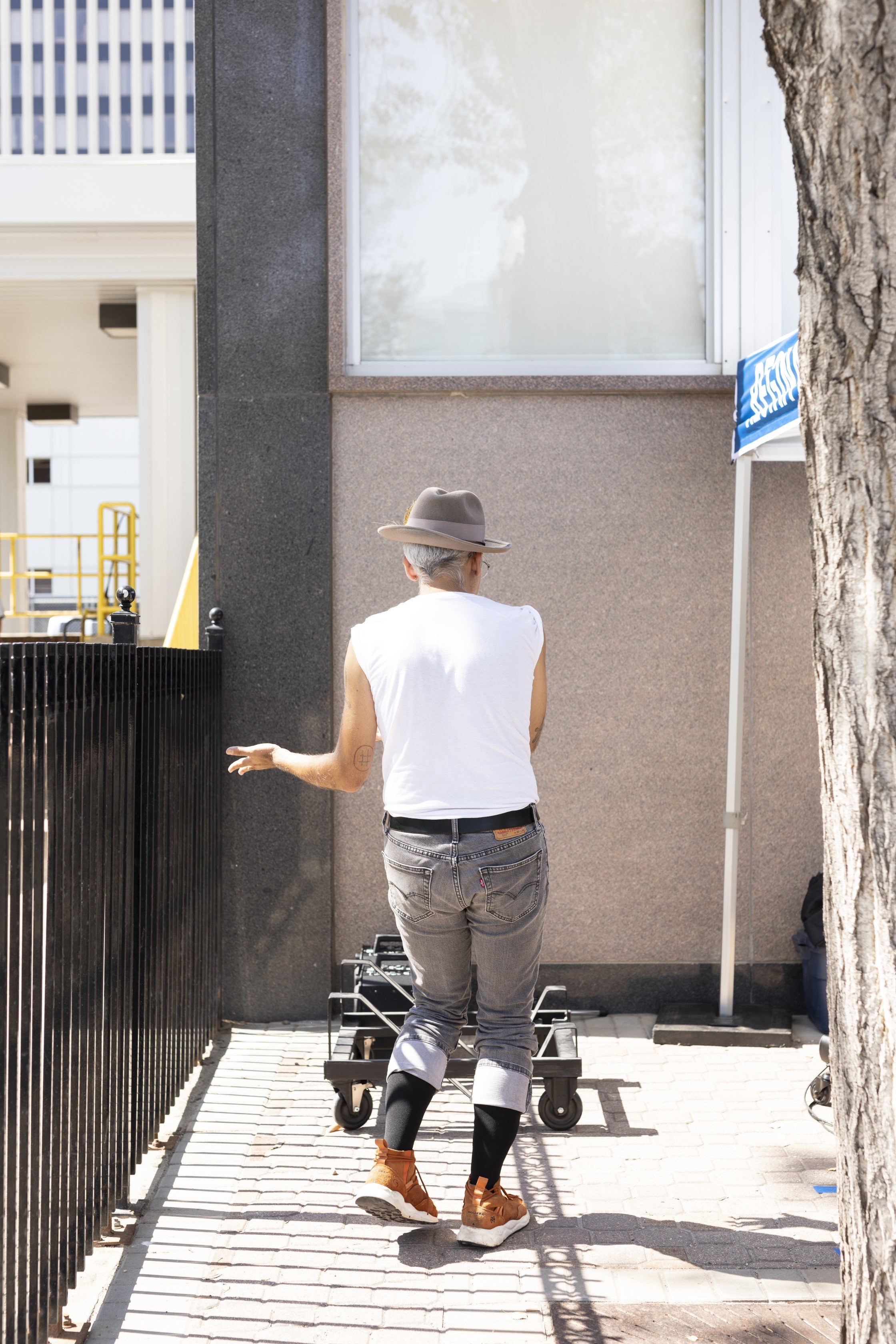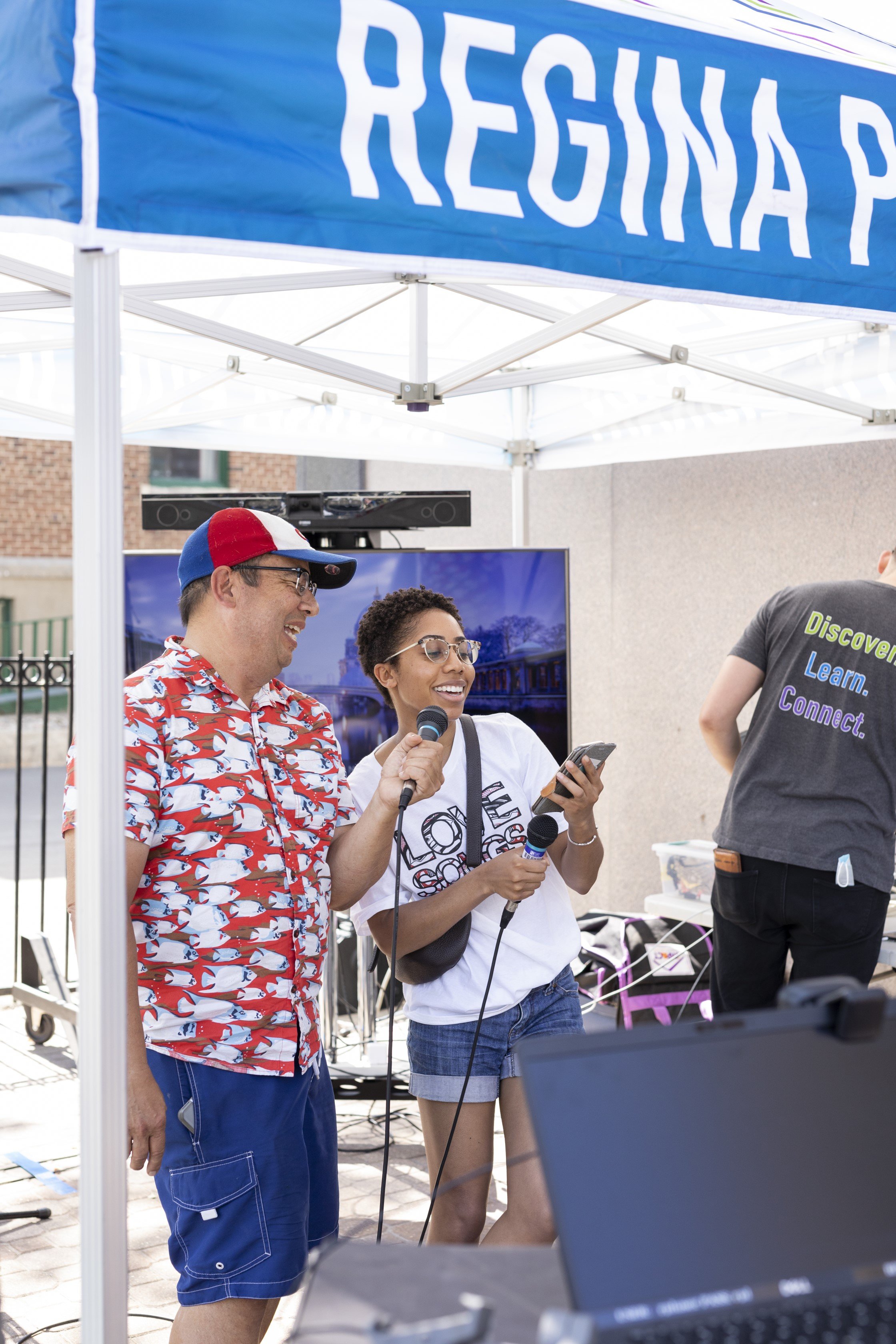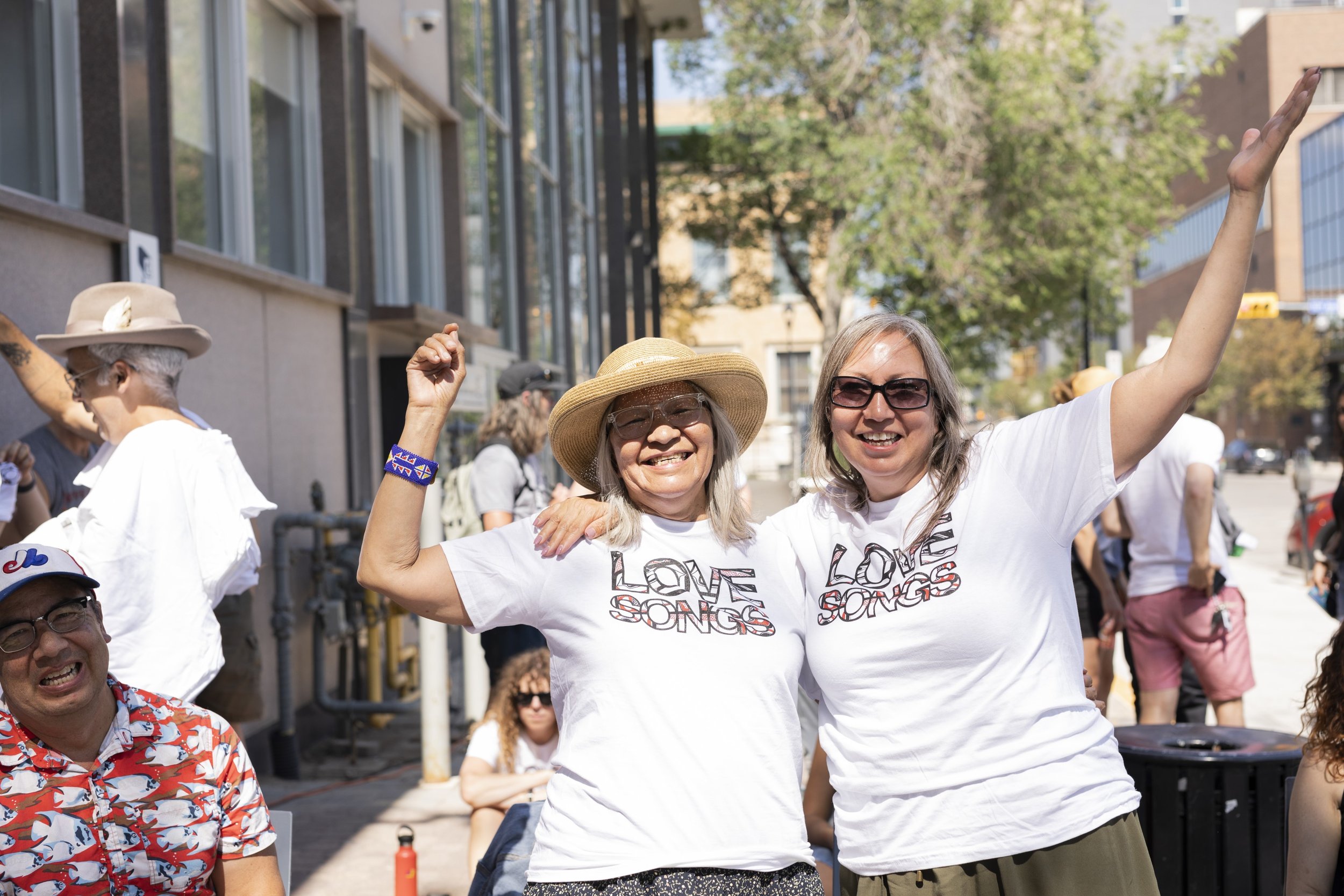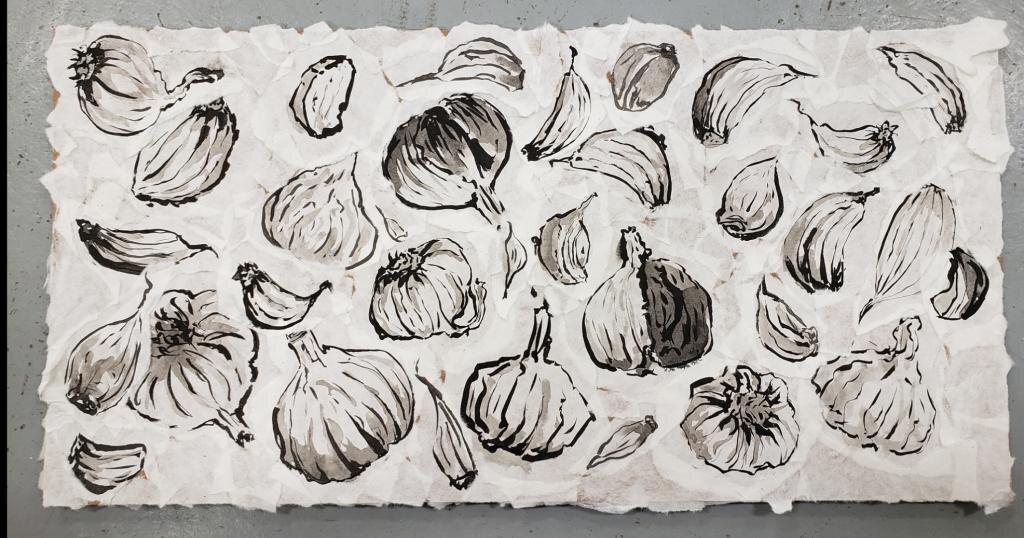Artist Projects
Peter and Jimmie - Love Songs to End Colonization
Cover image by Ashok Mathur.
In 2022, artists Peter Morin and Jimmie Kilpatrick launched a double album during an artist residency at Dunlop Art Gallery. The album, Love Songs to End Colonization repurposes popular love songs to critique and confront settler colonialism and includes both performance and karaoke versions of the tracks, inviting listeners to sing along.
Side A: The First Cut Is The Deepest, in the style of Cat Stevens/What's Love Got To Do With It, in the style of Tina Turner/Not The Lovin Kind, in the style of Buffy Sainte-Marie/Hello Darlin', in the style of Songs Ohia/Turn Out My Lights, in the style of Justin Townes Earle. Side B: Sweet Nothing in the style of Calvin Harris/High Flyin' Bird in the style of Richie Havens/Black River in style of Amos Lee/Who Made Who in the style of ACDC. Side C: (Karaoke Instrumental versions): The First Cut is the Deepest/What's Love Got to Do With It/Not The Lovin Kind/Hello Darlin'/Turn Out My Lights. Side D: (Karaoke instrumental versions): Sweet Nothing/High Flyin' Bird/Black River/Who Made Who
Vinyl Art Record for sale at Regina Public Library, Central Library, 2311-12th Avenue, Regina, SK and at SaskBooks.
Photos by Mika Abbott.
Alyssa Bornn - Through a window, out a door
"Through a window, out a door" by Alyssa Bornn is a commissioned response to the artwork "Reabracadabra" (1985) by Eduardo Kac found in the exhibition The Art Happens Here at Dunlop's Central Gallery.
Description: Through a window, out a door looks at the portrayal of spaces on screen, and on screens within screens, attempting to create an environment where these distinctions become confused. Playing games across a shared vocabulary. An index of familiar spaces, sites, rooms, views. Reorganizing your desktop, click through, making a selection. It's slow, lagging. My old computer would crash every time I would try to play a video. A spring breeze, an open window. Reality, virtually.
Bio: Alyssa Bornn is an interdisciplinary artist, filmmaker, and organizer from Winnipeg, MB. Her practice regularly utilizes traditional photographic methods alongside alternative and outdated digital modes of image capture. In particular her work is centered around ideas relating to transference, interchangeability, medium non-specificity, language, failure, and the poetics of technical processes. She holds a BFA (Hons.) from the University of Manitoba and is a member of Open City Cinema, the co-director of the Winnipeg Underground Film Festival, and an active member in Light Terrors (a loose collective showcasing moving image and audio works as live performance). She has run workshops for Platform Centre for Photographic + Digital Arts, PAVED Arts, and independently as Professional Development.
About Reabacadabra: This animated visual poem— composed of a large letter A surrounded by orbiting consonants from the word “abracadabra”— was created and shown via Videotexto, a pre-internet telecommunications network in Brazil that was based on France’s Minitel system. Videotexto offered public information and a user-to- user messaging system, primarily accessed via special terminals in public spaces such as libraries. The Minitel poems Kac produced and presented online between 1985 and 1986, Reabracadabra among them, expanded the possibilities of writing by incorporating the dynamism and mutability of digital technology. Videotexto allowed Kac to explore the possibility of “immaterial” art, or artworks based on information and networks, which could exist in many places and for many people at once, with no real original. In the 1990s, Videotexto was shut down and Reabracadabra could no longer be seen. After many years of research, Kac was able to reconstruct the animation based on salvaged data and photographs—a painstaking process that exemplifies the complex materiality underpinning “immaterial” works.
Cat Haines - Memories of Teen Spirit
"Memories of Teen Spirit" by Cat Haines is a commissioned response to the artwork "386 DX" (1998) by Alexei Shulgin. 386 DX is a part of Rhizome's Net Art Anthology. Image by Jaye Kovach.
Description: This drone is a response to 386 DX, ca. 1998, which includes a Windows/soundcard piece that is essentially a digital cover-band, reinterpreting classic hits in a uniquely glitchy way. Decaying loops play a central role in this piece, and speaks to the way affects and gender can build in our body over time through the repetition of acts and aesthetics. Each time the loop repeats I respond to it, and add to it. The result is a drone that is able to slowly shift texture over time, but it is a messy and gradual process, one that highlights the middle ground between multiple states, between multiple riffs or beats, between multiple genders - each present and interacting with the others at all times.
Bio: Cat Haines (aka witchknife) is a trans woman, lesbian, and settler from Treaty Four Territory. Her work, both academic and artistic, focuses on the boundaries between being; the now and the future, the masculine and the feminine (and beyond), one tone and then another. When Cat isn't making strange noises as witchknife, she can be found pursuing a Master's degree in Women and Gender Studies, and fighting for trans rights. You can find more of her drones at witchknife.bandcamp.com.
About 386 DX: 386 DX, hailed as “the world’s first cyberpunk band,” is fronted by a dingy singing PC equipped with Windows 3.1 and an ancient Creative Sound Blaster 16 sound card. Its performances—it only plays covers, ranging from “California Dreamin’” to “Smells Like Teen Spirit”—are sometimes accompanied by colorful digital graphics reminiscent of early 1990s screensavers. In 386 DX’s fifteen-year existence, the band played at clubs in Moscow and Tokyo, at the Musée d’Art Moderne de la Ville de Paris, at the US-Mexico border, and on a street corner in Malmö, Sweden. In the liner notes of the 2001 album The Best of 386 DX, Shulgin is identified as the band’s “operator,” making the computer its de facto front person. The musical source files used by the PC are all copied from the web, but when played back through the slow and error-prone system of 386 DX, each song is rendered uniquely. Although executed with silliness, the conceit of a band in the form of an outdated computer raises issues of ownership and authorship in digital production.
Kenton de Jong & Gallagher Laird - You Got Mail
This game was made in response to our Central Gallery exhibition The Art Happens Here! You Got Mail is heavily inspired by the art of early online video games and was made by Kenton de Jong, Gallagher Laird, and music by Emma Kramer-Rodger.
About: You Got Mail is an interactive browser-based game that takes players through the many different and often chaotic worlds of early online gaming. Come explore the pop culture, art styles, genres and themes the defined an early evolving and dynamic web.
Bios:
Kenton de Jong: A Regina-born blogger and web developer. He attended post-secondary for Website Design and Development via online courses out of Saskatchewan Polytechnic in both Saskatoon and Prince Albert. This is the second game he has made, with the first being an educational game based on the Regina Cemetery.
Gallagher Laird: A graphic designer from Regina, SK who is very enthusiastic about art & design. He has a great appreciation of pop-culture, video games, and coffee. He has worked in the print industry for over 10 years, and is currently working on an indie video game of his own.
Emma Kramer-Rodger: A composer and sound designer based in Saskatoon, Saskatchewan. Emma has graduated from the University of Regina and has a Professional Certificate from Berklee College Online. Emma has worked on many film, video game and virtual reality projects.
Ryan Hill - Artifacted
Experience Virtual Reality from the comfort of your computer screen! Just click the link to take a close look at some virtual derelict farm houses from around Saskatchewan! This work was made by Ryan Hill and was meant to be viewable in our Digital Lounge VR Station as a response to work in the exhibition The Art Happens Here.
Description: Inspired by Morehshin Allahyari’s work ”MATERIAL SPECULATION: ISIS“ in the Net Art Anthology, "Artifacted" is an exploration of a ubiquitous artifact of the Saskatchewan landscape: the abandoned farm building. The title of this piece plays with the multiple definitions of the word “artifact,” which can mean both the object itself as well as incorrect, confusing, altered, or misleading data or representation of information. Showcasing the buildings draws attention to the history of the built object from initial creation to its decay (the artifact as archaeological object) and the digital conversion into a 3D model creating graphical artifacts that transform the object into something different (the artifacted object, or flawed representation thereof). The collection of artifacts also invites connections to family, friends, death, and place as well as the nature of computer graphics and various filters of reality when viewing an object.
Bio: Ryan Hill has been working in various areas of interactive tech and the arts for over 15 years. He has worked in web development, mobile apps, sound for film and television, music production, Virtual and Augmented Reality and much more. Throughout his career he has always pushed boundaries into new areas of media and has always been excited to see what something can do. He has a BSc in Computer Science from the University of Regina where he focused on creative technologies.
About Material Speculation: For the project Material Speculation: ISIS (2015–16), artist-activist Morehshin Allahyari 3-D printed replicas of a set of twelve artifacts from the ancient cities of Hatra and Nineveh that were destroyed by ISIS in 2015. In order to create CAD model facsimiles, Allahyari performed extensive research, corresponding with curators and historians and tracking down images taken at various angles to refine her replicas.
In 2016, as part of Rhizome’s series “The Download” curated by Paul Soulellis, Allahyari published a 570 MB ZIP file containing research and 3-D-printable files related to one of these lost artifacts: a Roman-period figure from the Mosul Museum portraying King Uthal of Hatra, his hand raised in prayer. The files were released with the idea that other users could save and print them, creating a “distributed monument” to stand in for the lost original.
Andrei Feheregyhazi - Garlic Drop, Grobary end to end, reactacadabra
Make this art come to life in your living room! All you have to do is download the app BrellaBot AR to see 3 Augmented Reality artworks by Andrei Feheregyhazi! These works were commissioned in response to our current exhibition The Art Happens Here.
Brella Bot AR app:
https://apps.apple.com/ca/app/brella-bot-ar/id1427135096
Instructions:
1) Download the 3 black & white drawn images in this post on to an iPad or tablet. The images can also be found in the comments below.
2) Download the Brella Bot AR app linked above to your cell phone. Compatible with iPhone 6 or newer, all Pixel phones, Samsung Galaxy S7 and newer, Huawei P20 and newer.
3) Open the app and click on "Dunlop".
4) Have one of the 3 black & white images enlarged on your iPad/tablet or print out on paper.
5) Point your phone's camera at the image. The Augmented Reality will pop to life and you can move around it and view from any angle.
About the Augmented Reality:
Garlic Drop: This piece is a response to Garlic=RichAir and Garlic Trust. The augmented reality animation shows a machine that is representative of a garlic based economy, with the garlic tokens being distributed through the drop, then swallowed up again only to be dropped again.
Grobari end to end: This piece is a response to Grobari. The piece asks how far could the pages in Grobari reach if it were laid end to end. The piece features 20 ‘pages’ that climb into the sky then return to rest, giving a small sense of the massive scale a piece like Grobari could reach if laid out end to end, rather than stacked.
Reactacadabra: This piece is a response to Reabracadabra. Though the animation of Reactacadabra exists in the immaterial world of your phone, the goal was to make it feel as physical as possible. As in the original piece, the A in the centre is the only vowel while the consonants appear around it spelling out the word. Using cardboard, Reactacadabra attempts to mimic the movement of Reabracadabra, including the way it fades in and fades out.
Bio: Andrei Feheregyhazi is an artist based out of Saskatoon Saskatchewan Canada. He has exhibited globally with both his art, and animated work. His artwork is often filled with an absurd humour that doesn’t take itself too seriously. He addresses issues of tragedy, loss, and general feelings of dread and isolation in a lighthearted and whimsical way. He makes art about ambiguous things such as a bicycle dealing with life after fighting in a war. By keeping the subject ambiguous he allows people to imprint themselves on the characters and complete the piece with their own experiences. Currently he is pushing boundaries by combining augmented reality with various traditional art forms. He is currently focused on exhibiting in public spaces, where the art meets the audience. His goal is to create work that is open enough to allow people to engage and complete it in their own way.


